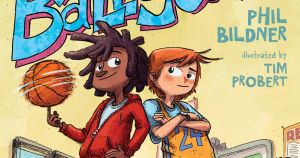
Review: A Whole New Ballgame by Phil Bildner
Although several elements of Red’s autism are portrayed well and I’m eager to read the sequels, the character is often relegated to muttering statistics and nervously stimming in the background.

Although several elements of Red’s autism are portrayed well and I’m eager to read the sequels, the character is often relegated to muttering statistics and nervously stimming in the background.
The entire Disability in Kidlit team wishes you a spectacular 2015!

A gorgeous look, a brand-new domain, exciting new features, and more on the horizon!
We’re looking to expand the Disability in Kidlit team, as the website has grown in popularity in recent months and we’re working on exciting new projects.

Bad depictions in popular culture foster the narrative of the lazy narcoleptic: They’re lazy. They’re late/unproductive/lethargic employees. They’re uncaring lovers or absent friends. And so on and so on.

It’s a rare occurrence when an author can update an already published book, and even more rare when that update includes a huge overhaul of the portrayal of an autistic character. Alyssa Hillary takes a look at both the original and updated version in this review.

Stranger represents a case where verisimilitude—the appearance of plausibility—succeeds where a more realistic representation of disability might have failed.

What I love most about Kiara—and the novel itself—is that she is unflinchingly genuine. Sooner or later, most Aspie characters written by neurotypicals eventually become caricatures. Having an Autistic character written by an actual Aspie makes all the difference.

Many characters who may be mentally ill reject treatment out of hand, considering therapy a waste of time and suspecting medication will turn them into a zombie. Why are these narratives so popular? What are the alternatives?

This is a book about a girl with an autistic brother. The autistic brother is crucial to the plot, but her actual brother is really more of a plot device than anything else.